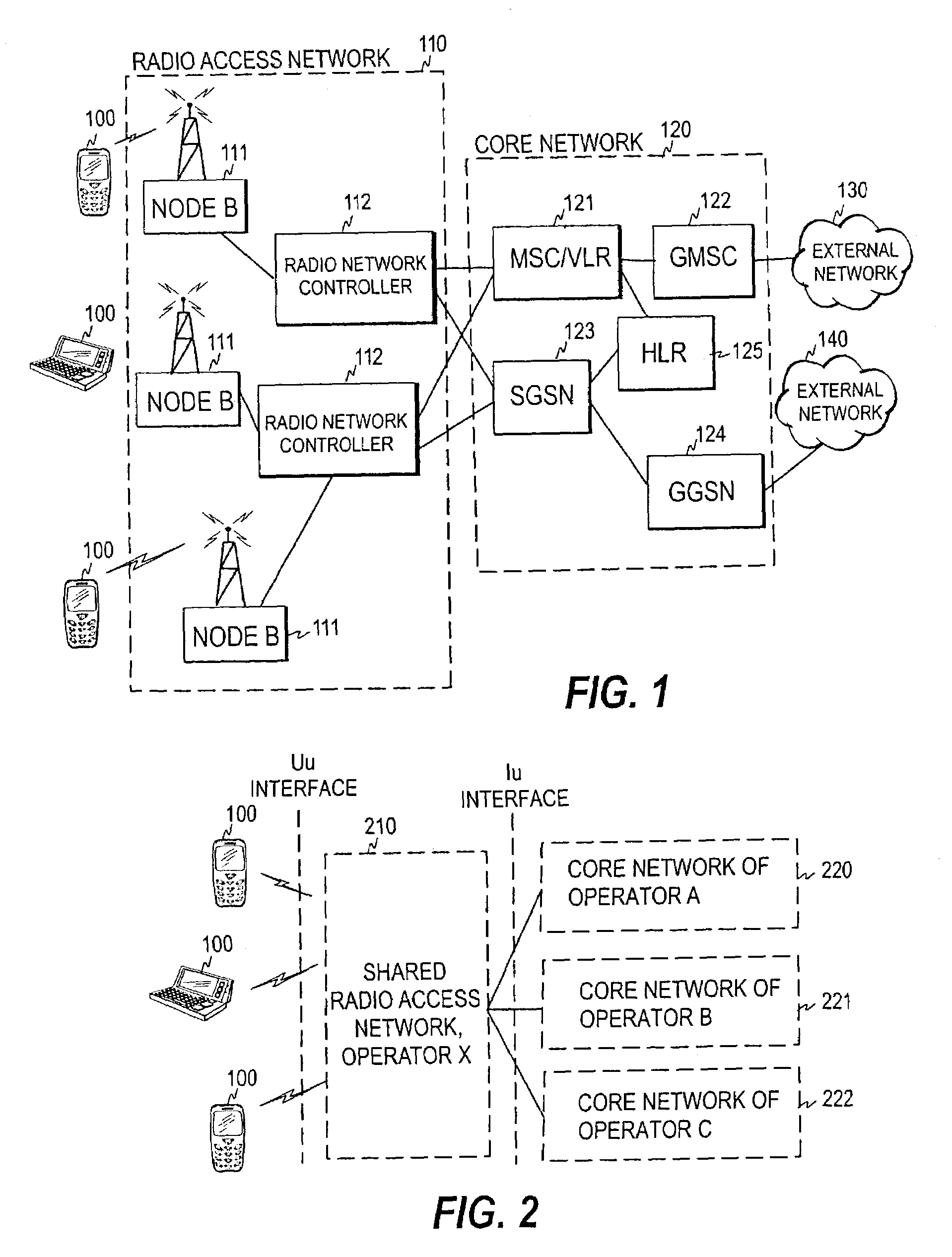Routing procedure for a communication system
- Summary
- Abstract
- Description
- Claims
- Application Information
AI Technical Summary
Benefits of technology
Problems solved by technology
Method used
Image
Examples
first embodiment
[0042]FIG. 3 illustrates the invention by showing the message exchange between the different entities in FIG. 2. As mentioned above, the RRC can be used in UMTS for connecting the terminal with the Radio Access Network. Therefore, when a user enters the network, an RRC connection must first be established across the Uu interface (step 300). The terminal then uses the initial direct transfer procedure to carry the initial message, which is a Non-Access Stratum (NAS) message to be transferred transparently through the RAN to the CN, over the radio interface to the RAN (step 301). The NAS message is the above-mentioned registration request, which in connection with registration may be a Location Updating Request, a Routing Area Update Request, or an attach message (PS attach or CS attach), for example.
[0043]The RNC then initiates the Initial UE message procedure according to the RANAP protocol, and forwards the NAS message first to the Core Network 220 of operator A in an initial UE me...
second embodiment
[0048]To avoid the above-described situation, a Core Network informs the next attempted Core Network the reason why the registration request was rejected. This may be implemented by adding to the reroute command a cause value, indicating why rerouting has taken place. FIG. 5 illustrates this embodiment, by showing the message exchange between the different entities in FIG. 2. In this embodiment, each reroute command sent to the RNC by the Core Network includes a cause value indicating why the Core Network rejected the request (compare steps 503 and 505). The RNC forwards the cause value received from the Core Network to the next Core Network in the initial UE message, whereby each Core Network that receives the registration request also receives the information why the request was previously rejected by one or more Core Networks (compare steps 504 and 506). It is to be noted here that the cause values can be used in the embodiment of FIG. 3, in the embodiment of FIG. 4, or in the ab...
PUM
 Login to View More
Login to View More Abstract
Description
Claims
Application Information
 Login to View More
Login to View More - R&D
- Intellectual Property
- Life Sciences
- Materials
- Tech Scout
- Unparalleled Data Quality
- Higher Quality Content
- 60% Fewer Hallucinations
Browse by: Latest US Patents, China's latest patents, Technical Efficacy Thesaurus, Application Domain, Technology Topic, Popular Technical Reports.
© 2025 PatSnap. All rights reserved.Legal|Privacy policy|Modern Slavery Act Transparency Statement|Sitemap|About US| Contact US: help@patsnap.com



